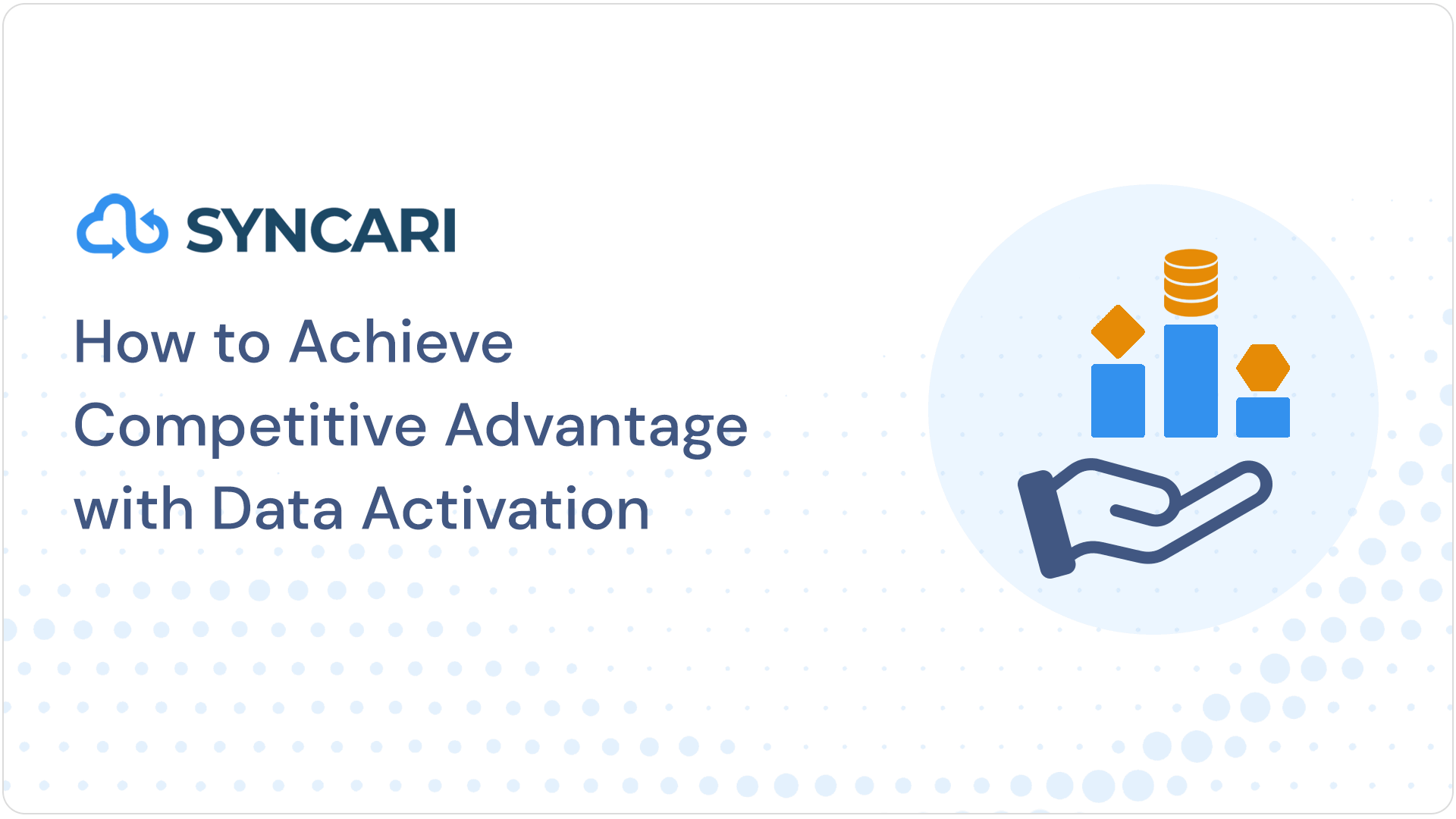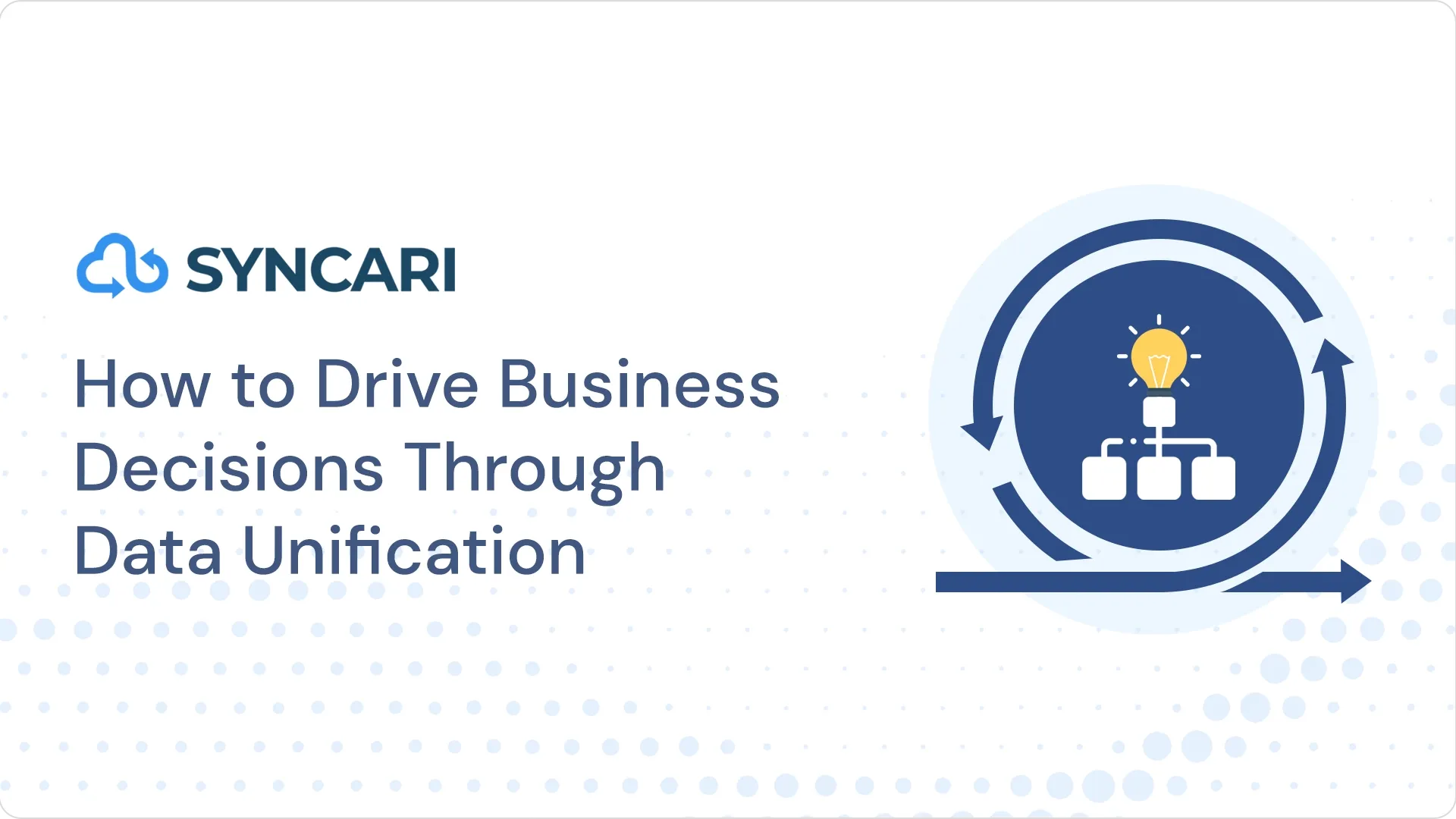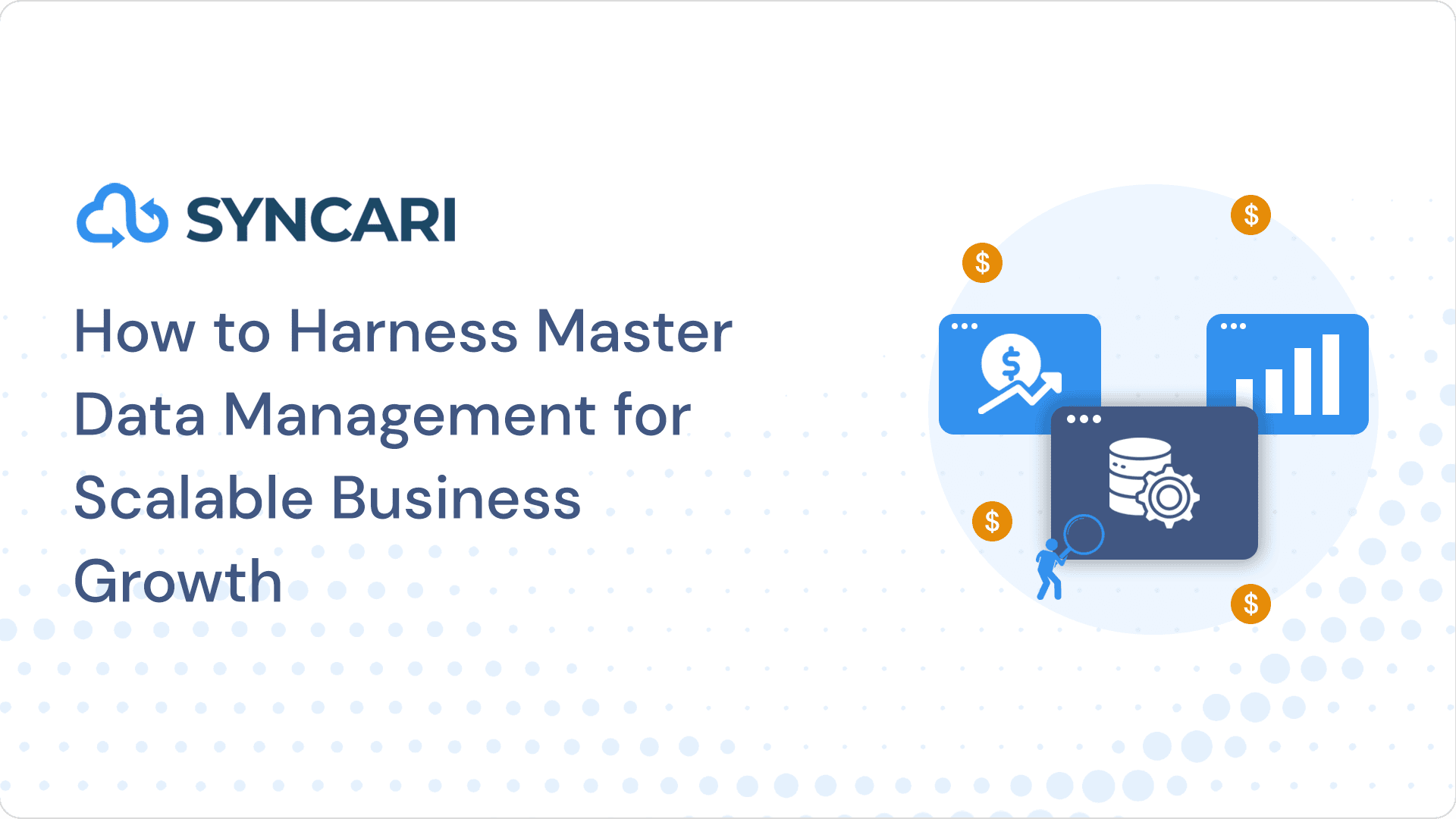Customer data is invaluable for companies in today’s data-driven world. By getting valuable insights into how customers use a product or service, what features they find most valuable, and where they encounter problems or inefficiencies, businesses can better understand their customers’ needs and tailor their products and services to meet those needs.
You can get insightful information about potential customers using product data from top product data platforms. We will be discussing these top product usage data platforms here so you can leverage this data effectively and stay competitive to meet the evolving needs of their customers.
What is Product Data Usage?

Product usage data refers to the information gathered about how customers interact with a product or service. It includes data about how frequently customers use the product, how long they spend using it, what features they use the most, and how they navigate through the product.
Product data usage platforms help you track customer usage data by collecting, analyzing and reporting data.
The data is collected through various methods, such as customer surveys, usage analytics tools, or user testing. The insights obtained from product usage data can help businesses understand how their customers use their products, which features are most valuable to them, and what pain points or areas for improvement exist.
By analyzing product usage data with the top product data usage platforms, you can make data-driven decisions about improving your products, prioritizing new features, and optimizing user experiences. This can lead to increased customer satisfaction and loyalty and higher sales and revenue for your business.
Advantages of product data usage tools
Product data usage tools provide valuable insights into how your products are used and how customers interact. This information can be used to make better decisions about product development, marketing and sales, customer service, and other business areas.
- Improved Customer Experience
Understanding how customers are using your products and identifying problematic/ improvement areas is necessary. Using product data usage platforms effectively to understand consumer behavior, you can change your products and services to improve the overall customer experience.
You will gain a competitive advantage in your industry by leveraging product data usage platforms. You can stay ahead of trends, customer needs, pricing, and consumer behavior. This will help you develop products and services more aligned with customer preferences.
Product data usage platforms help you gather information about customer behavior and preferences, competitor pricing, underperforming assets, etc., which will help you increase efficiency and gain a competitive advantage to ultimately increase your revenue and profitability.
Disadvantages of Product data usage platforms
The accuracy and completeness of the data being analyzed can greatly impact the usefulness of product data usage platforms. If the data is incomplete, inaccurate, or outdated, the insights generated from it can not be reliable or actionable.
Product data usage platforms cannot always provide context around the analyzed data, such as the reasons behind consumer behavior or market trends. Making informed decisions based solely on the collected data would be a little challenging without context.
Certain limitations exist regarding the amount or type of data that can be processed/analyzed depending on the product data usage platform. Some tools also require technical knowledge for effective usage, which could be a barrier for some.
Product data usage platforms can be pricey, especially if you need to buy hardware/ software or hire more people. This cost might be a problem for small businesses or those on a budget.
How to evaluate a Product Data Usage Platform?

While we will discuss the top product data usage platforms here, you should check a few things while evaluating one that best fits your business and needs.
- It should be able to integrate with multiple sources.
- It should provide accurate analysis.
- It should be easy to use.
- It should be secure.
- It should have responsive customer support.
- It should be priced reasonably.
Top Product Data Usage Platforms
1. Pocus
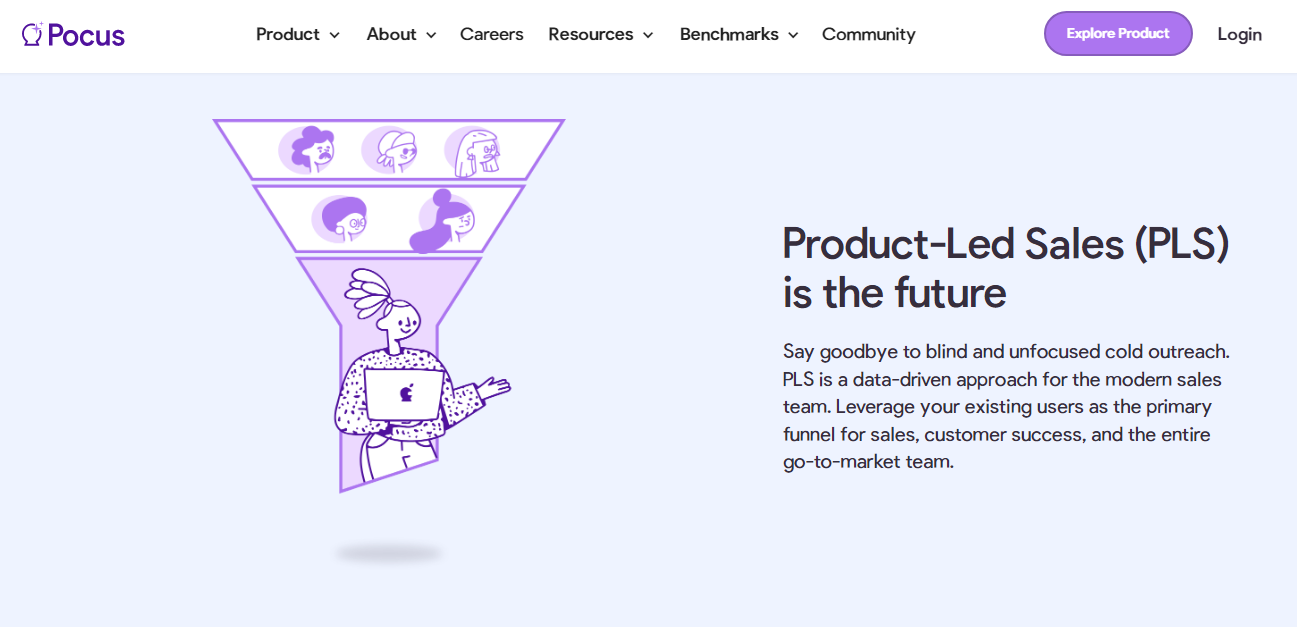
Pocus aims to organize and present companies’ product data in a way that can help the companies identify new revenue opportunities with less time and no coding. It takes raw product data and presents it to the company in a dashboard that team members can personalize to show the metrics they want to see.
Benefits
- Designed for non-technical GTM teams.
- Easy to configure dashboards and workflows.
- No-code interface
Limitations
- Pocus primarily focuses on simplifying product data management and distribution processes rather than data unification. It does not address the issue of data quality and consistency across multiple sources of data.
- The pricing is not explicit on their website, so you’ll pay more for advanced data analysis.
- It does not address the issue of data quality and consistency across multiple sources of data.
Pricing
While their website does not mention how much they charge, Pocus only provides custom pricing. It charges customers anywhere from $500 to $10,000 monthly for ONLY product usage insights, depending on the number of users or data being piped into Pocus.
Inflection
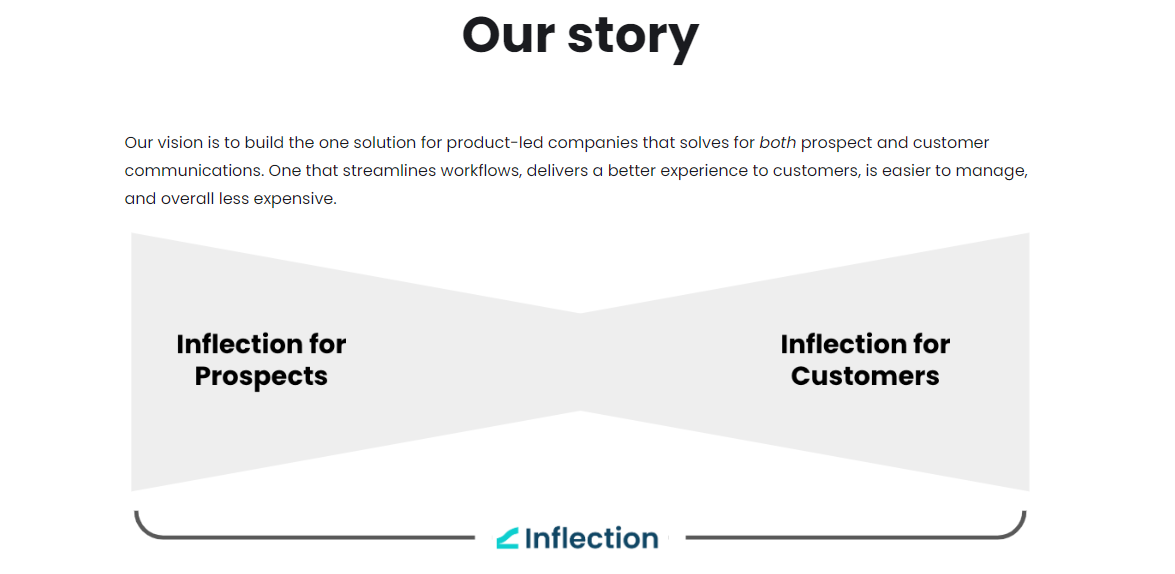
Inflection is a platform for growth, marketing, and customer success teams at product-led businesses. It enables these teams to gain valuable insights into their product usage by providing comprehensive reports, easy-to-read dashboards, and a real-time view of usage data.
Benefits
- Can handle large amounts of data
- Easy integration with other e-commerce platforms and CRM tools makes accessing usage data and analytics easy.
- Provides advanced features such as predictive analytics and natural language processing, enabling users to gain deeper insights and better understand their data.
Limitations
- Inflection has data processing and analytics capabilities but requires additional tools to integrate data from different sources into the platform.
- Its costs rise as the data volume grows, and users must pay more if they require access to the platform’s advanced features and capabilities.
- There is little to no customization for specific use cases and a steep learning curve that may require additional time and resources.
Pricing
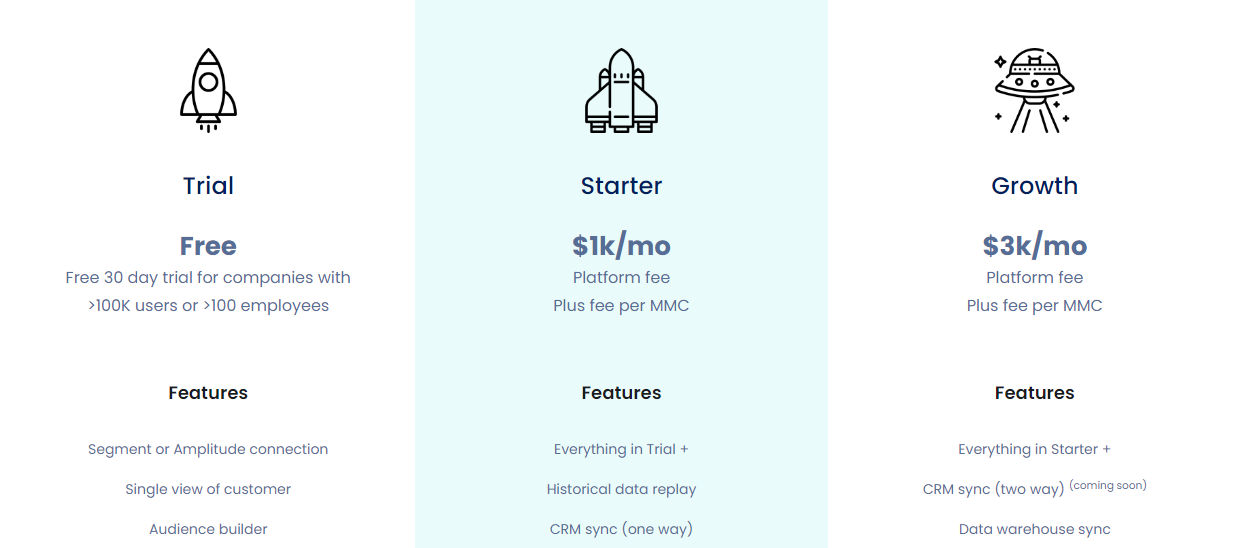
Flexible pricing depending upon your usage, plus a 30-day free trial.
- Starter– $1000/month
- Growth– $3000/month
- Enterprise– Custom Quotes.
2. Correlated
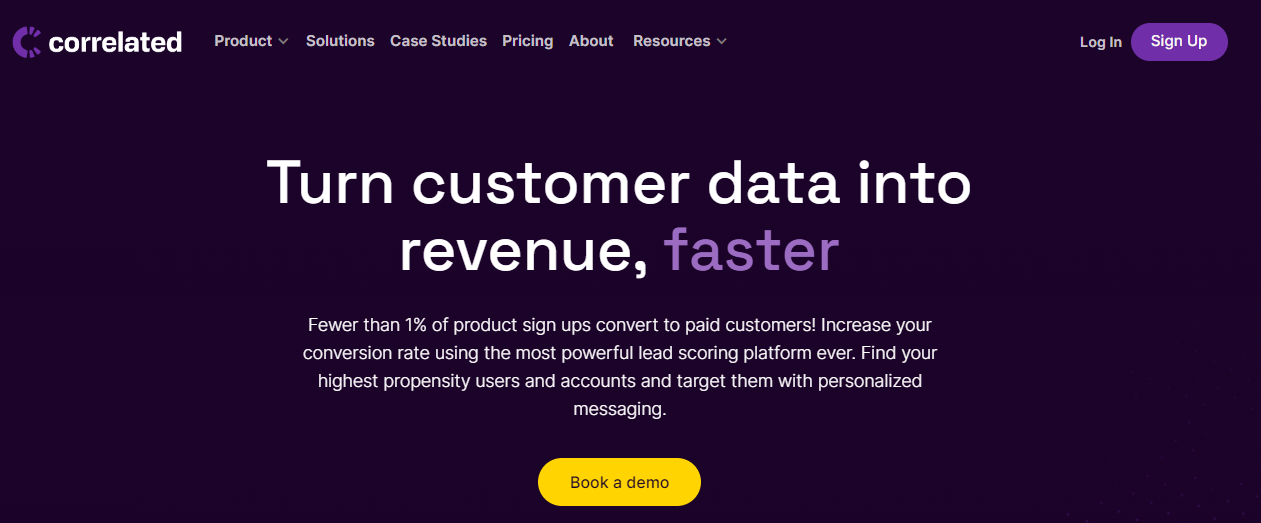
Correlated is a real-time data platform that helps businesses collect, unify, and analyze customer data from multiple sources. It helps businesses gain insights into customer behavior and preferences, optimize their marketing strategies, and drive business growth through data-driven decision-making.
Benefits
- Correlated provides real-time data streaming capabilities, allowing businesses to analyze customer behavior and preferences as it happens.
- Correlated can unify and normalize data from multiple sources, making it easier for businesses to gain a complete and accurate view of their customers.
- Correlated helps businesses save time and resources by automating data collection and analysis, allowing them to focus on other important tasks.
Limitations
- Correlated costs increase significantly as businesses grow and require more data processing and storage capabilities, customization, and integration. Also, the advanced features are available in the enterprise plan only.
- Correlated’s data unification features require a certain level of data standardization and consistency across all data sources to be effective. The unification process may not be successful if there are inconsistencies or errors in the data.
- Correlated only works with limited and specific amounts of data and relies on already available data.
Pricing

Correlated offers three pricing plans that are:
- Startup– Free
- Growth– $1899/month
- Enterprise– Custom
3. Hevo
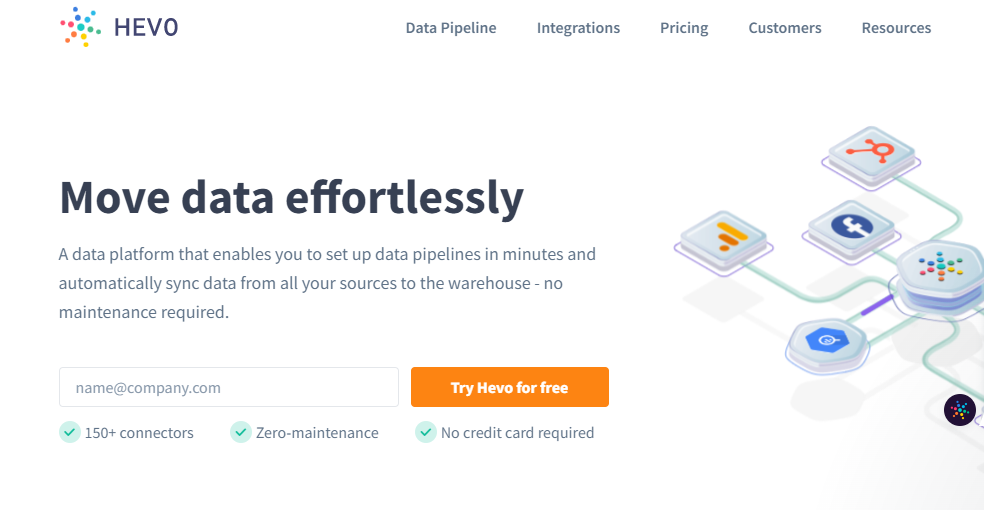
Hevo is a platform that helps organizations connect different data sources (like databases and applications) and move data into a central location to be analyzed. Automating data and providing an easy-to-use interface makes getting data into the central location easy.
Benefits
- Allows integration with many other data platforms
- User-friendly interface
- Provides built-in data quality checks and error monitoring
Limitations
- The pricing model is based on the volume of data being processed and becomes expensive as data volumes increase.
- The platform does not offer enough customization options for users with more complex data integration needs, which makes it difficult to tailor the ETL process to specific requirements.
- Users have encountered challenges integrating data from more complex sources, such as legacy systems or customized databases.
Pricing
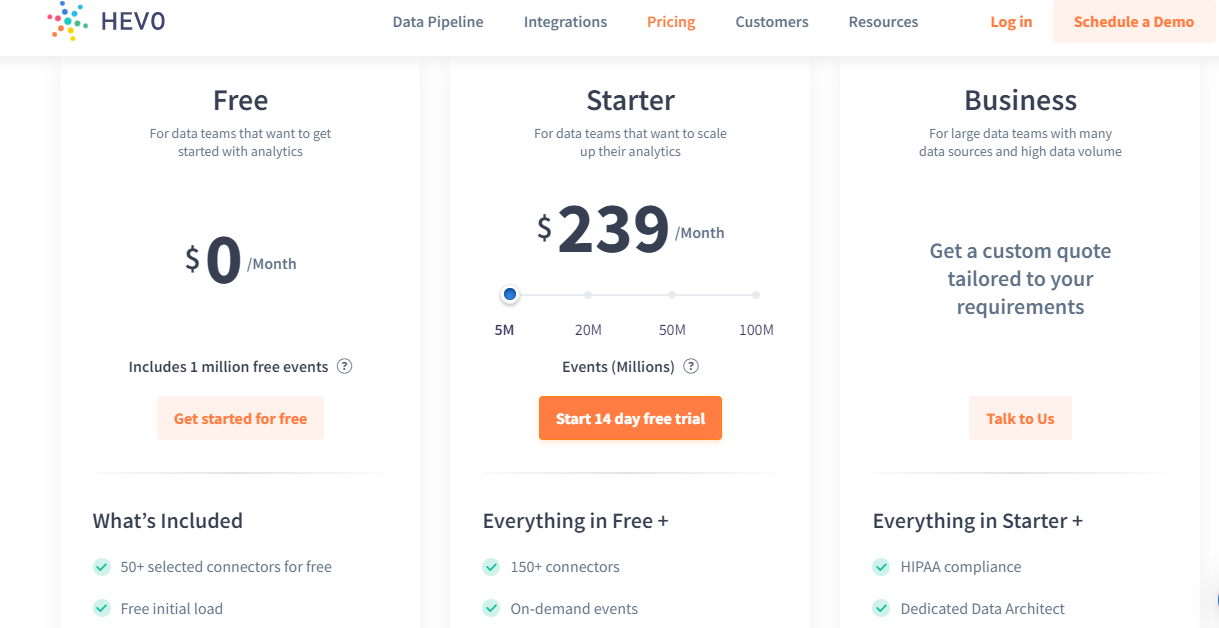
Hevo offers two main products: Hevo Activate and Hevo Pipeline. Hevo Activate is offered through these plan options:
- Free: $0/month.
- Starter: $199/ month + a 14-day free trial.
Hevo Pipeline comes in these plan options:
- Free: $0/ month.
- Starter: $239/ month billed annually or $299/month billed monthly + a 14-day free trial (for minimal events)
- Business: Custom quotes.
4. Hightouch
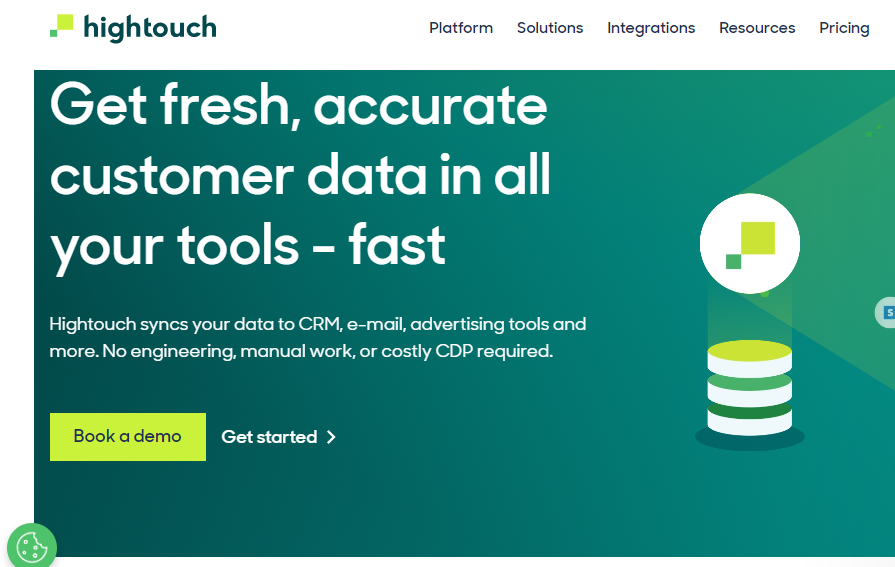
Hightouch is a no-code data integration platform that helps businesses move their customer data from one place to another quickly and easily. It works with many different data sources, like CRMs and databases, and sends the data to popular destinations such as data warehouses, customer data platforms and marketing automation tools.
Benefits
- Provides easy no-code integration.
- Friendly user-interface.
- Eliminates tedious data tasks.
Limitations
- Advanced analytics is available in the enterprise plan, which has pricey custom pricing for some business owners.
- Hightouch does not provide wide integration across sources, which limits its functionality.
- Limited functionality requires data engineering and SQL knowledge.
Pricing

Hightouch has 4 pricing plan options.
- Free– $0/ month
- Starter– $350/month
- Pro– $800/month
- Business– Custom
5. Census
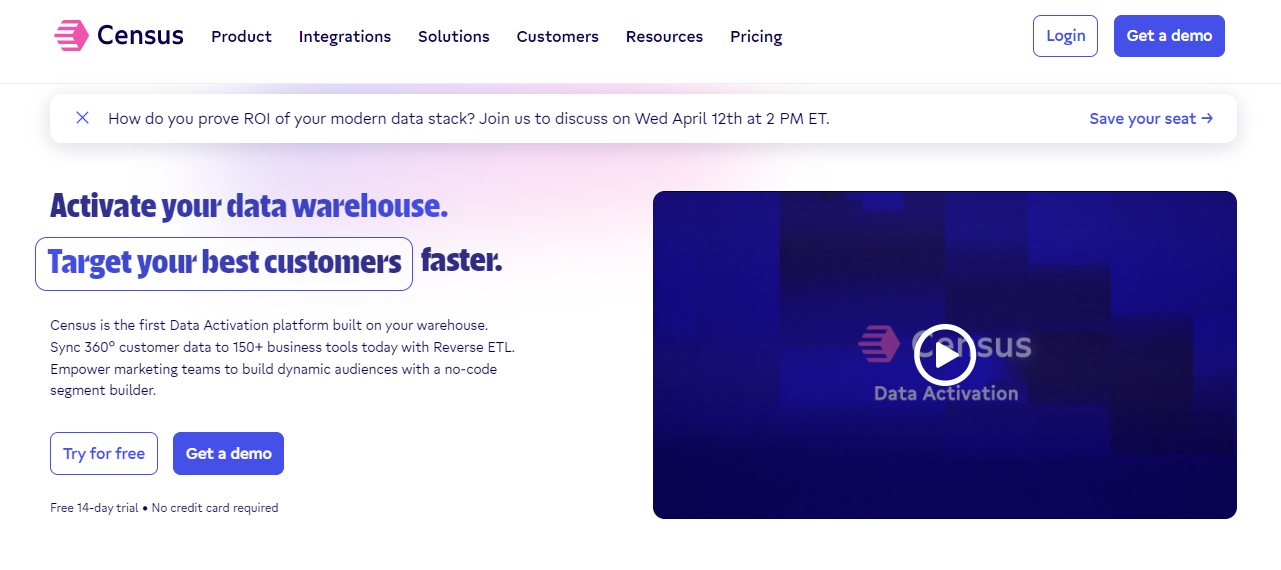
Census is a data integration and sync platform that helps businesses unify customer data from different sources and load it into various destinations. Census provides granular control over data syncs, allowing businesses to tailor their data integration to their needs and requirements. The platform offers real-time data sync, ensuring that the data in the destination is always up-to-date.
Benefits
- Census allows businesses to integrate data from different sources into a single destination.
- It allows businesses to standardize their data and ensure consistency across different sources.
- Census provides a range of customization options, meaning businesses can tailor the platform to their specific needs and requirements.
Limitations
- Census pricing is based on the number of monthly records synced, making it more expensive for businesses with large data volumes. Advanced features like real-time sync, data validation, and encryption are available in the platform plan only.
- Census does not merge customer records with variations in data points from different sources into a unified view.
- Users found it difficult to make sync changes once they are set up. If you make a mistake or want to adjust something, it can be challenging without setting up a new sync and deleting the original. This can be frustrating and time-consuming.
Pricing
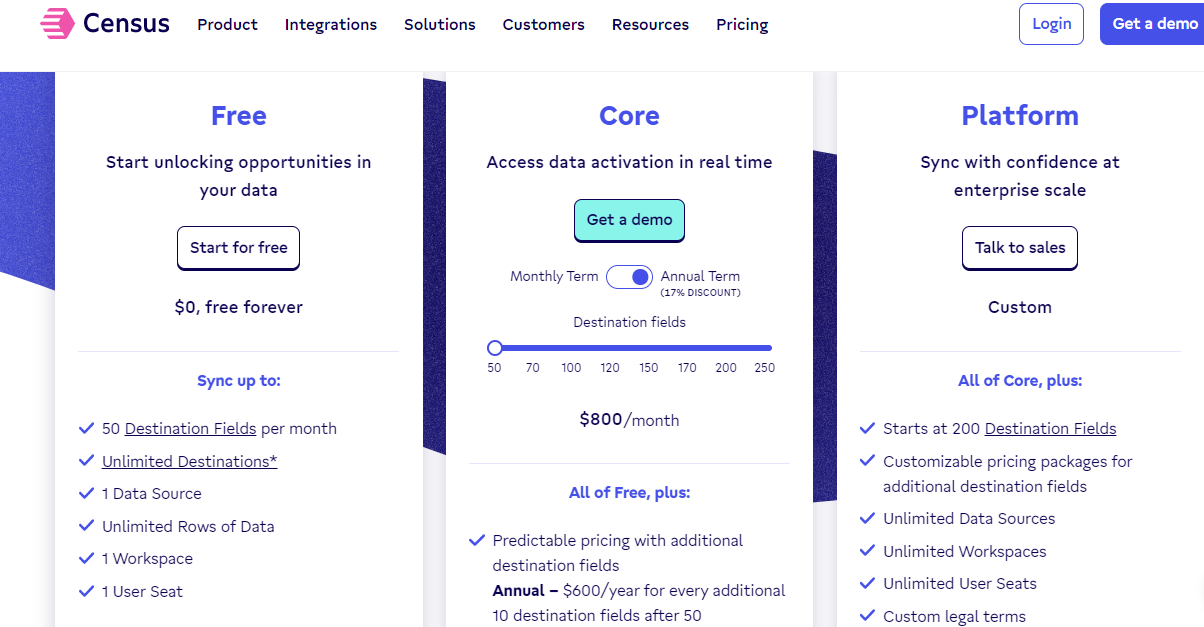
- Free-$0, free forever.
- Core– $960/ month, monthly billing
$800/month, annual billing
- Platform– Custom quotation
6. Syncari
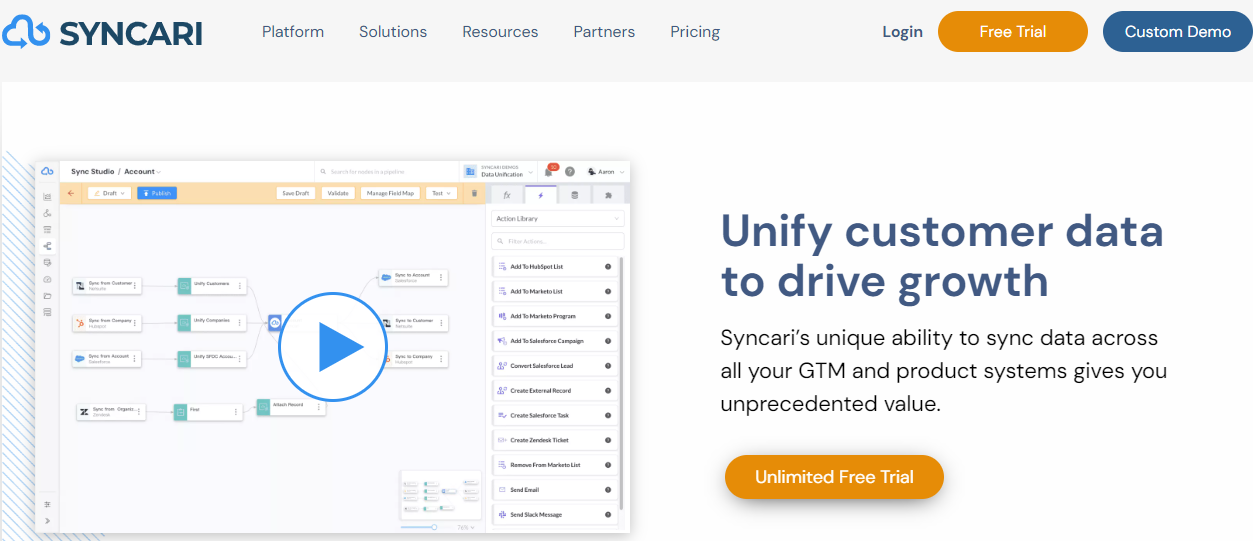
Syncari is a platform designed to help businesses unify, manage, and govern their data across various systems and applications. It uses advanced automation and machine learning to streamline data management, making it easier for teams to work together, eliminate data isolation, and reduce errors.
Benefits
- Syncari allows businesses to create a centralized data model connecting various systems and applications. It is a one-stop solution for all your data needs.
- Syncari has a responsible and responsive customer support team.
- Syncari helps businesses to save time and increase efficiency by automating data processes.
Limitations
- Syncari does require some technical knowledge to operate.
Syncari Pricing
Syncari’s pricing is based on the number of records you manage, making it easy to predict costs and avoid unexpected expenses. Each Syncari instance includes pipelines, connectors, API calls, tasks, and transactions. Build unlimited pipelines, connect multiple systems, and run them as often as needed, all without worrying about additional costs.
Syncari: The One-Stop Solution For All Your Data
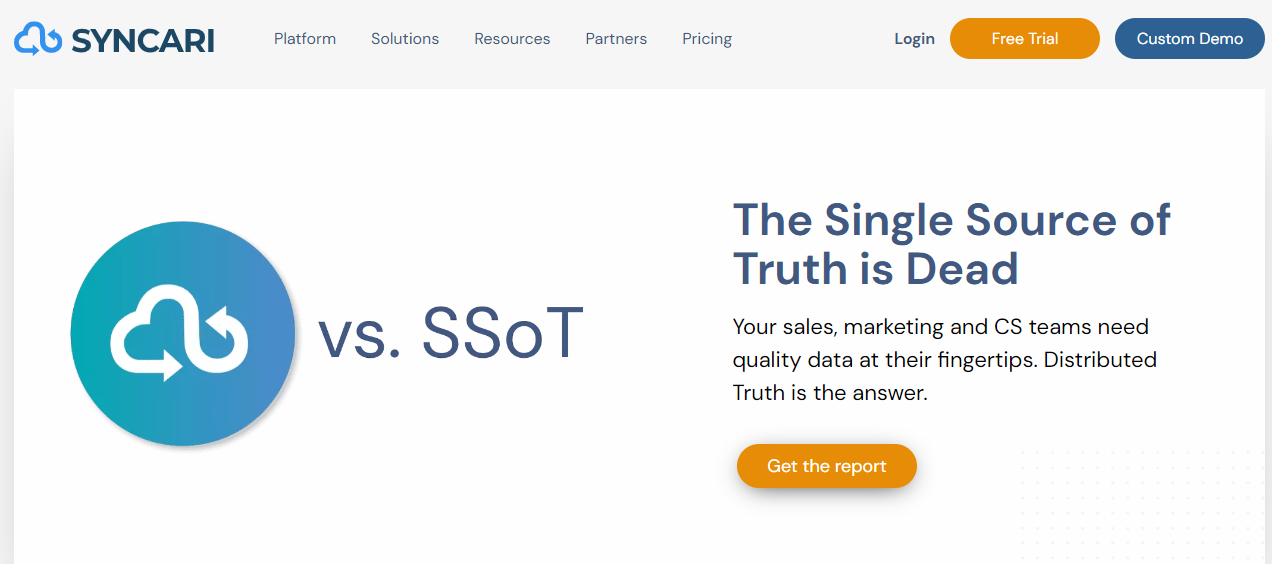
Syncari is a data automation platform that helps businesses automate data operations, eliminate data errors, and improve data quality. The platform offers a range of features, including data synchronization, data cleansing, and data enrichment.
One of the key benefits of Syncari is that it helps businesses achieve a single source of truth for their data. By automating data operations and ensuring data consistency across systems and applications, Syncari helps businesses avoid data inconsistencies and errors, which can lead to costly mistakes and missed opportunities.
Key Features-
Integration –
Syncari integrates data from multiple sources, including CRM systems, marketing automation tools, and other databases, into a single, unified view.
Cleansing –
Syncari helps businesses identify and eliminate duplicate records, incomplete data, and other data errors that can impact data quality.
Enhancement –
Syncari enriches data with additional information, such as social media profiles, company data, and other publicly available information, to help businesses gain deeper insights into their customers and prospects.
Governance –
Syncari is designed to help businesses maintain data privacy and security and comply with data protection regulations like GDPR and CCPA. The platform provides a centralized data management hub, making it easier for businesses to maintain data privacy and security and comply with regulatory requirements.
Why Syncari?
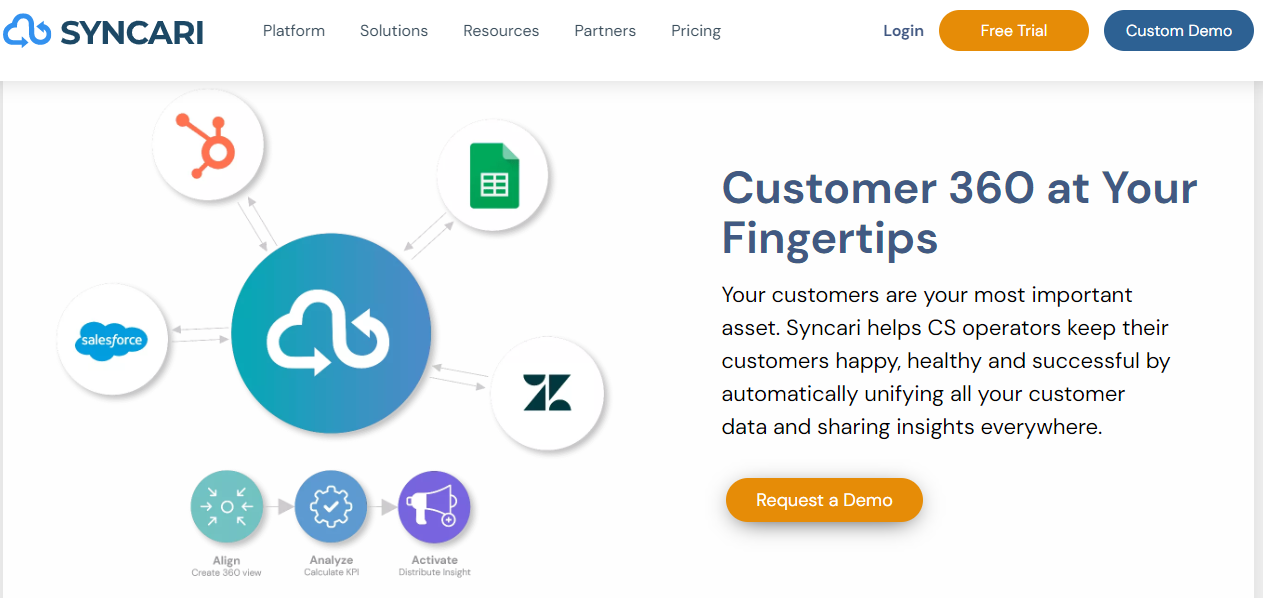
Syncari offers multiple advantages over the other top product data usage platforms:
Syncari automates data operations, which helps businesses save time and reduce the risk of errors associated with manual data entry and management.
We provide businesses with a single, unified view of their data, which helps eliminate data inconsistencies and errors that can arise from having data stored in different systems and applications.
Syncari provides a range of data quality tools, such as data cleansing and data enrichment, which help businesses improve the accuracy and completeness of their data.
We also provide tools for managing data access and permissions, ensuring that only authorized users can access sensitive data.
Syncari can be customized to meet the specific needs of individual businesses, making it a more flexible platform than other off-the-shelf product data usage platforms.
Conclusion

The world of e-commerce is constantly evolving, and businesses need to adapt quickly to stay ahead of the game. Using top product data platforms is essential to manage and optimize product data in today’s digital landscape.
With the right platform, businesses can unlock the full potential of their product data, enabling them to deliver personalized and engaging experiences to their customers while boosting their bottom line.
Whether a small business or a large enterprise, investing in a top product data usage platform can help you streamline your operations, improve your decision-making processes, and ultimately drive growth and success.
So, if you haven’t already, it’s time to explore Syncari and boost your revenue by gaining valuable insights from your data. Syncari is the perfect platform for your business needs. Get started today and get a free trial and a custom demo!
